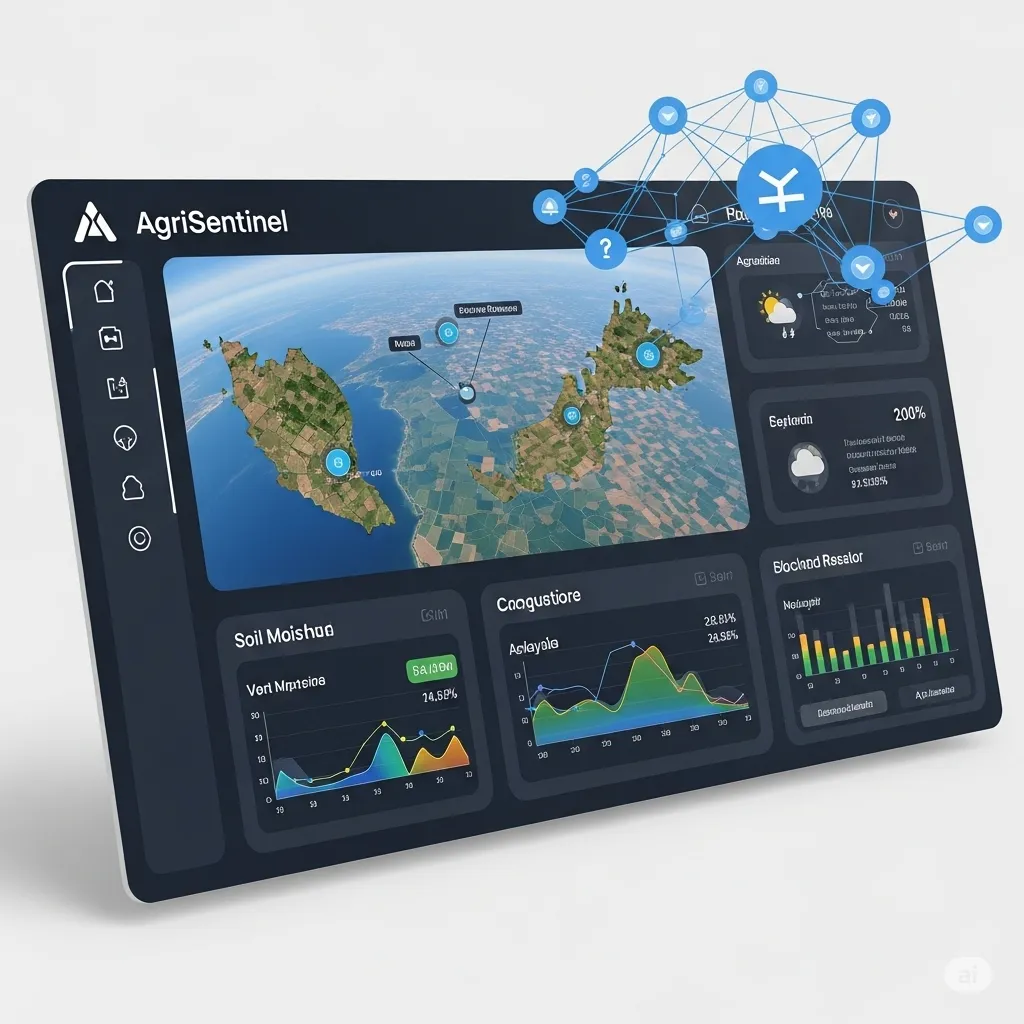What if you could predict a rice shortage three months before it happens? 🌾
AgriSentinel isn't just another farming app - it's Malaysia's first comprehensive agricultural intelligence network that combines satellite imagery, weather data, soil sensors, and farmer reports into a unified blockchain-verified prediction system. Think of it as a crystal ball for food security, but powered by math instead of magic.
The Problem We're Solving: Food crises don't appear overnight, but our response systems act like they do. Traditional agricultural monitoring relies on outdated data collection methods - government surveys that take months to compile, fragmented sensor networks that don't talk to each other, and prediction models that ignore the ground-truth knowledge of actual farmers.
Meanwhile, climate change is making weather patterns increasingly unpredictable, supply chains are becoming more complex, and Malaysia's food import dependency continues to grow. We needed something smarter.
Our Solution - AgriSentinel Does Three Things Really Well:
- Predicts Before Problems Hit: Advanced ML models analyzing everything from satellite vegetation indices to social media sentiment about food prices, giving stakeholders 2-6 month advance warnings about potential supply disruptions.
- Verifies Every Data Point: Blockchain-based verification ensures that when our system says "palm oil yields will drop 15% in Johor," you can trust that prediction is based on immutable, verified data sources.
- Rewards Participation: Farmers earn tokens for contributing accurate field reports, creating a self-sustaining network where better data means better predictions for everyone.
Real-World Impact: Imagine government agencies adjusting import policies before shortages hit. Picture smallholder farmers switching to drought-resistant varieties because AgriSentinel flagged incoming weather patterns. Envision food manufacturers securing supply contracts at stable prices because they saw market shifts coming months ahead.
That's the world AgriSentinel is building - one where food security becomes proactive, not reactive.
Risks and challenges
Technical Hurdles (The Nerdy Stuff)
Data Integration Nightmare: Agricultural data comes in about 47 different formats from satellites, sensors, weather stations, and farmer WhatsApp groups. Creating unified APIs that actually work is like teaching different languages to speak together - technically possible but requires patience and significant engineering effort. Solution approach: Progressive integration starting with major data sources, standardized transformation layers, and partnerships with key data providers.
AI Model Accuracy vs. Interpretability Trade-off: Black-box models might predict better, but farmers and government officials need to understand WHY the system is recommending specific actions. This creates tension between cutting-edge performance and practical usability. Mitigation: Hybrid approach using interpretable models for farmer-facing recommendations and complex ensembles for internal predictions.
Market & Adoption Challenges
The Trust Problem: Convincing traditional agricultural stakeholders to trust AI predictions over generations of farming experience is... challenging. Plus, many smallholder farmers lack digital literacy or smartphone access. Strategy: Partner with existing farmer cooperatives, provide multilingual interfaces, and start with simple, obvious predictions that build confidence.
Government Buy-in: Policy-makers need to see clear ROI before investing in new agricultural monitoring systems, especially when existing (albeit inadequate) systems are already funded. Approach: Focus on cost-savings from reduced crisis response needs, improved trade balance from optimized imports, and enhanced food security resilience.
Operational Realities
Let's be honest - running an agricultural intelligence network across Malaysia isn't exactly straightforward:
- Connectivity Issues: Many agricultural areas have spotty internet connectivity, which affects real-time data collection and farmer participation.
- Seasonal Funding Fluctuations: Agricultural research often faces budget cuts during economic downturns, right when predictive systems become most valuable.
- Cross-border Data Sharing: Regional food security requires data from neighboring countries, but government data sharing agreements move at bureaucratic speeds.
Risk Mitigation Philosophy: Start small, prove value, scale gradually. Better to have a working system covering 20% of Malaysia's agricultural output than a perfect system that never gets deployed.
